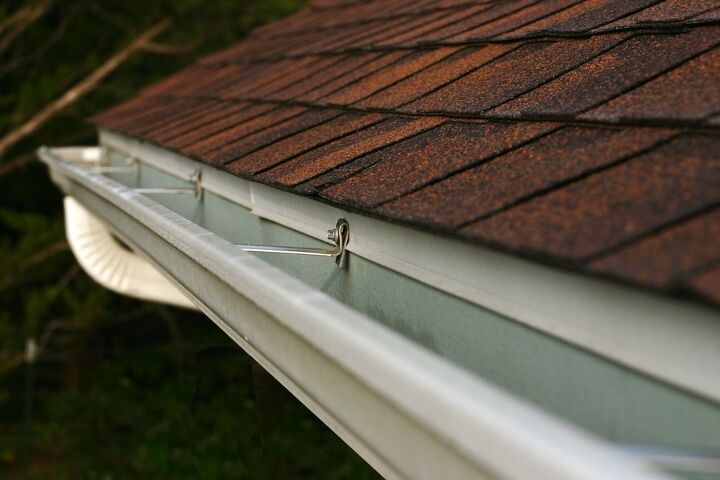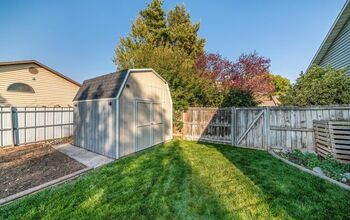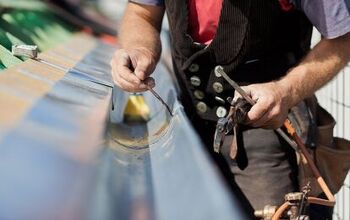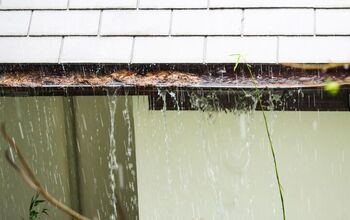Rain Diverters Vs. Gutters: What Are The Major Differences?

When the clouds open up and a downpour begins, your roof better be able to withstand the relentless onslaught of rain. If it can’t, leaks are bound to happen, and these can compromise the structural integrity of a building while also paving the way for mold, mildew, and other dangerous spawns.
Gutters were created to ensure rainwater runoff got from roof to ground with no issues, and rain diverters help in this. But should a homeowner use one, the other, or both on their home? Such is the question this article will answer.
Rain diverters are not substitutes for gutters. In fact, it’s best to buy rain diverters and gutters together, as this combination will help ensure rainwater runoff does not damage a roof or a home’s foundation. While both fixtures are visually unattractive, they provide proven utility—and serve as trusted safeguards—without costing a lot of money.
Do You Need Gutter Installation Services?
Get free, zero-commitment quotes from pro contractors near you.

What Is a Rain Diverter?
Rain diverters are sleek metallic strips, and they’re mainly used by homeowners who can’t completely surround their roofs with gutters. They’re also purchased by those who simply don’t like how gutters look.
Additionally, rain diverters can be installed on homes that lack a front porch, as they can direct water away from the front door, shielding those passing through it from roof runoff.
Rain diverters are not gutter and downspout replacements. They compliment gutters, and a home that includes both rain diverters and gutters is sure to have an effective rainwater drainage system.
Pros & Cons of Rain Diverters
Rain diverters, like any fixture, have their upsides and downsides. While these are good at directing rainwater away from entryways and those who pass through them, they can inadvertently cause ice jams. Here are the pros and cons of rain diverters you should know before you install these on your home.
Pro: Great at Diverting Rainwater
As their name indicates, rain diverters are great at diverting rain. This is why they are used in conjunction with porticos, bay windows, and dormers. They are very good at ensuring water flows down the roof in a specified way, and they enhance any kind of drainage system.
When rainwater is adequately directed to the right drainage site or downspout, a homeowner doesn’t have to worry about ice dams in the winter or foundation problems that are due to long-term pooling.
Pro: Protecting Walls & Siding
Rain diverters redirect rainwater as it streams down a roof, which means they play a big part in preventing pools from forming. If pools don’t form, then rainwater doesn’t have a good shot at seeping through the roof to negatively affect the walls and ceiling underneath.
Similarly, diverters play a part in ensuring a home’s siding isn’t consistently getting battered by streaming rainwater. Since rainwater—after hitting the rain diverter—will be redirected to a specific location, one doesn’t have to worry about consistently exposing their siding to rainwater runoff.
If your walls aren’t compromised by rainwater and your siding isn’t consistently battered by rainwater runoff, you won’t need to spend an arm and a leg on maintenance, repairs, and/or replacements. In short, rain diverters are great for those who don’t want to spend on hefty repairs and replacements often.
Con: Creating Ice Dams
Rain diverters can be incredibly beneficial during downpours, but when temperatures drop alongside an increase in precipitation, rain diverters become more of a burden than a boon.
This is because they redirect water to specific locations, like they’re supposed to. The problem is that when temperatures drop, this redirected water can freeze, forming ice jams that then disrupt the entire drainage system. An ice jam could cause water to leak underneath the roof, where it would affect the ceiling and walls.
Furthermore, ice jams are hard to deal with. Once one forms, a homeowner should expect at least limited damage before the ice dam is cleared. They can also create long-term problems, as they may expand shingles and the beams which lie underneath the roof.
One could take out their rain diverters before the cold months come in, but this would certainly be a hassle. The only alternative is ensuring that—even under a heavy volume of rain—no pooling happens.
But when the temperature gets low enough, rainwater can freeze or become slushy before it ever hits a gutter or downspout. In such conditions, a rain diverter is more of a liability than an asset.
Con: Visually Unattractive
Despite rain diverters being considerably problematic in the wintertime, the most common criticism of these fixtures is that they’re an unsightly blemish on a home’s exterior. If a J- or L-shaped diverter is sticking out of a uniformly shingled roof, it will be impossible to miss.
Therefore, homeowners who care about consistency may shy away from rain diverters, despite how much utility they provide. Of course, you can always use rain diverters in the areas that are not visible from the street. This way you can capitalize on the usefulness of the diverters without the negative visual impact on your home’s exterior.
One should also consider rain diverters and gutters together when thinking about visual appeal. If a rain diverter is what saves you from having to install a line of clunky, visually out-of-place gutters, is it really—comparatively speaking—that much of an obstruction?
What Is a Gutter?
Gutters prevent rainwater from negatively affecting a home’s roof, and they do even more to safeguard a home’s foundation. They are designed to divert rainwater runoff to a downspout, and from there the rainwater goes to a safe place on the ground that’s far from the home’s immediate foundation.
When rainwater flows freely off a roof and onto the ground immediately below, such can erode the soil if it’s done for a prolonged period of time. Free falling rainwater runoff may also damage plants if there’s a particularly high volume.
If this rain-induced erosion goes on for an extended period of time, the home’s foundation will be compromised eventually, especially if there are no gutters employed anywhere. Even the most basic drainage system, if properly constructed, can do a world of good for a home’s roof and foundation.
Pros & Cons of Gutters
Gutters certainly provide a lot of utility, but that doesn’t mean they are without downsides. There are some notable ones to know, and one should take these into account, along with the benefits of gutters, before they install a gutter-based drainage system.
Pro: Ensuring Rainwater Runoff Doesn’t Ruin a Home’s Roof or Foundation
An effective gutter system will give a homeowner more protection against rainwater, as gutters divert rainwater away from a house so it doesn’t cause erosion or leaks.
Gutters do what rain diverters can’t, in that they can carry rainwater runoff for a long distance until it reaches a downspout, where it’s then transported away from the house. Therefore it’s best to use rain diverters in combination with an effective gutter system.
Pro: Keeping Siding Clean
Gutters can also keep mud, dirt, and debris from splashing onto the base of your home’s exterior walls. After all, since rainwater runoff will not be freely falling from the roof, there’s no chance of pooling and splashing occurring in a detrimental location.
Pro: Good for the Environment
Since rainwater runoff can quite literally wash away plants and grass, installing gutters ensures the area under your roof is still capable of maintaining vegetation.
Con: Visually Unpleasant
Gutters are even more visually unappealing than rain diverters, but a homeowner really can’t escape installing gutters. They provide much more utility than they take away from a home’s exterior, and those who really care about exterior appearance can find a way to mask gutters.
Moreover, a homeowner can use gutters and rain diverters in tandem to ensure that gutters are used only where absolutely necessary, i.e. at corners and downspouts.
Con: Repair & Maintenance Can Be a Hassle & Costly
Maintaining gutters can be a hassle, especially if you live in an area where falling leaves are to be expected every fall. If the gutters fill up with debris, they become useless quite quickly, which means you’ll have to stay on top of things to ensure your gutters are always free of obstructions.
And if high winds or torrential rain knock the gutters out of place, realigning things can be challenging. Connecting gutters once they’ve become dislodged or broken may require replacement, of not just one section but of the whole gutter system. This is something to keep in mind before installing gutters.
Do You Need Gutter Installation Services?
Get free, zero-commitment quotes from pro contractors near you.

Final Note
In the end, a savvy homeowner does not select rain diverters over gutters. Instead, they use both fixtures in harmony to ensure rainwater runoff does not damage their home’s roof, interior walls, and ceilings, or foundation. Rain diverters can direct water to a small stretch of gutters, thereby eliminating the need for a large, unsightly gutter network.
Rain diverters and gutters provide many more benefits than they do cons, and this is something one should keep in mind before they select rain diverters and gutters to install. If a little obstruction to your home’s visual appeal meant you’re preventing thousands in damage, wouldn’t you take it?

Matt loves everything DIY. He has been learning and practicing different trades since he was a kid, and he's often the first one called when a friend or family member needs a helping hand at home. Matt loves to work with wood and stone, and landscaping is by far his most favorite pastime.
More by Matthew Mountain



















![12 Washing Machine Brands to Avoid [with Recall Data]](https://cdn-fastly.upgradedhome.com/media/2023/07/31/9075781/12-washing-machine-brands-to-avoid-with-recall-data.jpg?size=350x220)







